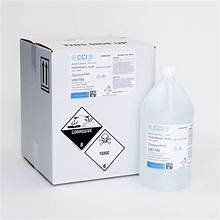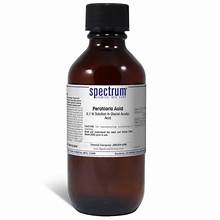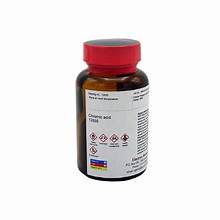Acids that Deserve Attention
Hydrofluoric acid (HF) is highly corrosive and can weaken glass. All forms of HF—whether dilute, concentrated, or as vapor—can result in serious burns. It's important to note that burns from HF may not be immediately felt and can lead to severe tissue necrosis, with a slow healing process that is often very painful. Inhaling HF mists or vapors can cause significant damage to the respiratory tract, which could be fatal.
Due to its hazardous nature, hydrofluoric acid should only be used in a suitable fume hood, and proper personal protective equipment (PPE) should be worn, including gloves, safety glasses, and a lab coat. Additionally, since HF can damage glass, it must be stored in compatible containers made of materials such as high-density polyethylene, low-density polyethylene, or Teflon.

Nitric acid is highly corrosive, and its oxides are extremely toxic. As an oxidizing agent, nitric acid can react with various materials (such as ethers, acetone, and other combustible substances) to create flammable and potentially explosive compounds. For this reason, nitric acid should only be used in a fume hood and must be stored away from any combustible materials.
It's important to note that paper towels used to clean up spills of nitric acid can ignite spontaneously.

Picric acid can form explosive compounds with many combustible materials, particularly when it is dry. When the moisture content drops below 10%, picric acid becomes unstable and may explode if shaken, exposed to sudden temperature changes, or subjected to friction when opening the cap. It is important to date picric acid and store it as a flammable solid, ensuring it is not kept for extended periods.

Perchloric acid can form unstable and potentially highly explosive compounds when it comes into contact with many organic substances and metals. It is essential to use perchloric acid with extreme caution and only within a fume hood specifically designed for its use. Please reach out to Environmental Health and Safety (EHS) before using perchloric acid in a fume hood.
When storing perchloric acid, ensure that the container is placed in a glass tray that is deep enough to contain any potential spills. It is important to date the container upon receiving it in the lab and again when it is opened. Dispose of perchloric acid either one year after receipt or six months after opening, whichever comes first.

Chromic acid and chromerge solutions must be handled with extreme care. If you are using these solutions to clean glassware, it is advisable to replace them with safer alternatives, such as “No-Chromix.” The disposal of these substances can be costly. They may be used with caution only when no other options are available.
